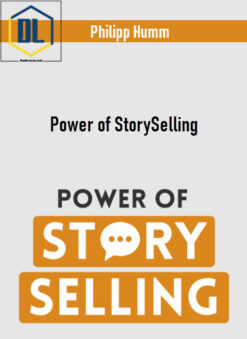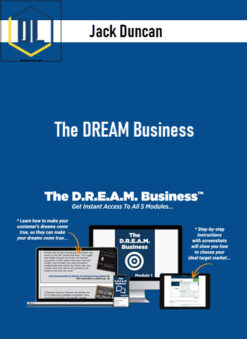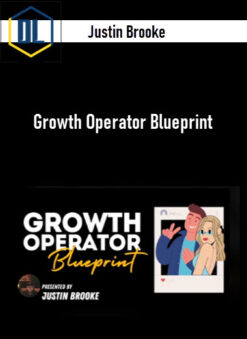-
×
 Rich Shy Girl – The Formula
1 × $9.00
Rich Shy Girl – The Formula
1 × $9.00 -
×
 Ross Jeffries – New Code Next Generation
1 × $21.00
Ross Jeffries – New Code Next Generation
1 × $21.00 -
×
 Zac Hansen – The Productized Community
1 × $29.00
Zac Hansen – The Productized Community
1 × $29.00 -
×
 Steven Heller – Unconscious Restructuring
1 × $19.90
Steven Heller – Unconscious Restructuring
1 × $19.90 -
×
 Victor Casler – Personalized DeFi Crash Course
1 × $10.00
Victor Casler – Personalized DeFi Crash Course
1 × $10.00 -
×
 Simpler Options – Ultimate Options Trading Blueprint
1 × $19.00
Simpler Options – Ultimate Options Trading Blueprint
1 × $19.00 -
×
 Philipp Humm – Power of StorySelling
1 × $9.00
Philipp Humm – Power of StorySelling
1 × $9.00 -
×
 Complete 32+ Hour Video Training Course 2008
1 × $25.00
Complete 32+ Hour Video Training Course 2008
1 × $25.00 -
×
 Drniki – Find Alpha Course – How to Find New Crypto Projects
1 × $70.00
Drniki – Find Alpha Course – How to Find New Crypto Projects
1 × $70.00 -
×
 Daniel McEvoy – Dans Bull Run Millions Crypto Course
1 × $40.00
Daniel McEvoy – Dans Bull Run Millions Crypto Course
1 × $40.00 -
×
 BeSomebodyFX – The Real Fundamental Analysis
1 × $11.00
BeSomebodyFX – The Real Fundamental Analysis
1 × $11.00 -
×
 Neuro-Linguistic Programming (NLP) Practitioner Certificate
1 × $7.00
Neuro-Linguistic Programming (NLP) Practitioner Certificate
1 × $7.00 -
×
 Chanti Zak – Grow with Quizzes
1 × $142.00
Chanti Zak – Grow with Quizzes
1 × $142.00 -
×
 Jack Duncan – The DREAM Business
1 × $9.00
Jack Duncan – The DREAM Business
1 × $9.00 -
×
 Alexandra Danieli – Selling for Projectors
1 × $39.00
Alexandra Danieli – Selling for Projectors
1 × $39.00 -
×
 Justin Brooke – Growth Operator Blueprint
1 × $33.00
Justin Brooke – Growth Operator Blueprint
1 × $33.00 -
×
 B The Trader – Trading Course
1 × $20.00
B The Trader – Trading Course
1 × $20.00
Buy With Coupon: DLC25 (-25%)
David Zemach-Bersin – Fundamentals of Functional Integration
$49.00 Original price was: $49.00.$15.00Current price is: $15.00.
Product Delivery : Instant Deliver
SKU: L2NCTGVU
Categories: Health & Lifestyle, Instant Delivery
Tags: David Zemach-Bersin, David Zemach-Bersin - Fundamentals of Functional Integration, Fundamentals of Functional Integration
Description
David Zemach-Bersin – Fundamentals of Functional Integration
Salepage: David Zemach-Bersin – Fundamentals of Functional Integration
Description of Fundamentals of Functional Integration
Feldenkrais Resources is excited to present this professional DVD program for Feldenkrais practitioners, aimed towards the process of starting a Functional Integration lesson. The author, David Zemach-Bersin is one of Moshe Feldenkraiso first North American students. He has had a continuous Functional Integration practice for almost 40 years, working successfully with a wide range of clients from world-class performers to people with seemingly intractable physical difficulties.
What you’ll learn in Fundamentals of Functional Integration
Fundamentals of Functional Integration program is well organized and offers concrete recommendations that can be directly applied to enhance your insight and skill in the process of beginning a lesson. The Fundamentals of Functional Integration¨ How to Begin
PART I: THE ART AND SCIENCE OF OBSERVING
APPLYING THE SCIENTIFIC METHOD IN FUNCTIONAL INTEGRATION
Dr. Feldenkrais said that in Functional Integration, I am always alternating between thinking inductively and deductively. David observed Dr. Feldenkrais applying this approach in his private practice in Tel-Aviv and has used it in his own work with thousands of students. In this presentation, David conveys precisely how to use both inductive and deductive reasoning in relationship to the art of kinesthetic inquiry. You will discover how to develop yourself as a neutral measuring instrument and the importance of an empty mind in Functional Integration.
Fundamentals of Functional Integration concepts and strategies included in the course include:
- How to reliably produce a difference which the person will be able to clearly sense.
- How to develop and utilize an empty mind to perceive each moment’s emergent truth or potential functional connection.
- How to use new information to create new options for action. The importance of actively invalidating our most basic assumptions about a person.
- How to test your inferences in FI and to feel the student’s biases in multiple planes of action.
- How to not contradict your student’s nervous system.
- How to create a lesson in which the student will not feel their disorganization.
- How to utilize your student’s embedded patterns in order to find their most elegant sense of self. The relationship between a person’s bias and their symptoms.
PART II: BEGINNING AT THE BEGINNING: THE INTERVIEW
The Second Functional Integration ‘fundamental’ focuses on the Functional Integration Interview, which is distinctly different from all other clinical interview processes. The interview is itself, the beginning of the Functional Integration lesson. In this presentation, you will learn how to be a Feldenkrais detective; curious to follow any clue to find the underlying roots of a person’s complaint.
You will learn how to bear witness to the individual and not to a person with a pathology. David deconstructs his approach to the interview with such clarity and specificity that you will immediately be able to begin using the concrete tools that he offers and become a more effective Feldenkrais Practitioner. You will learn:
- How the categorical and linguistic distinctions made during an interview are the first opportunities to create a context for healing and improvement.
- How the interview is a model for what we teach. With our quality of attention, interest, and functional orientation, the specificity of our questions, poise, breath, doubt, openness, curiosity, and optimism, we are already teaching.
- How in F. I., inquiry and treatment are the same ie. the process is content as well.
- How to ask questions that do not define a person by his/her pathology or problem, but rather by their deep resources for health.
- How to use the interview to obtain a complete natural history.
- How to use language to access positive thoughts, ie., how to create an environment in which the person can see himself/herself as having untapped resources for optimum functioning.
Lessons and Chapters
THE ART AND SCIENCE OF OBSERVING
- How to Begin a Functional Integration Lesson: The Art of Invalidation. Talk and Lab 1
- Widening Our Perceptions. Talk, Demonstration and Lab 2
- Further Refinement Through Invalidation: Observation in Turning. Demonstation and Lab 3
- How to be an Effective Measuring Instrument. Talk, Demonstration and Lab 4
Readmore about: David Zemach-Bersin
Delivery Policy
When will I receive my course?
You will receive a link to download your course immediately or within 1 to 21 days. It depends on the product you buy, so please read the short description of the product carefully before making a purchase.
How is my course delivered?
We share courses through Google Drive, so once your order is complete, you'll receive an invitation to view the course in your email.
To avoid any delay in delivery, please provide a Google mail and enter your email address correctly in the Checkout Page.
In case you submit a wrong email address, please contact us to resend the course to the correct email.
How do I check status of my order?
Please log in to TheDLCourse account then go to Order Page. You will find all your orders includes number, date, status and total price.
If the status is Processing: Your course is being uploaded. Please be patient and wait for us to complete your order. If your order has multiple courses and one of them has not been updated with the download link, the status of the order is also Processing.
If the status is Completed: Your course is ready for immediate download. Click "VIEW" to view details and download the course.
Where can I find my course?
Once your order is complete, a link to download the course will automatically be sent to your email.
You can also get the download link by logging into your TheDLCourse account then going to Downloads Page.
Related products
-50%
Donna Eden with David Feinstein – The Energies of Love: The Invisible Key to Fulfilling Relationship
-23%
-74%
-63%
-74%
-70%









